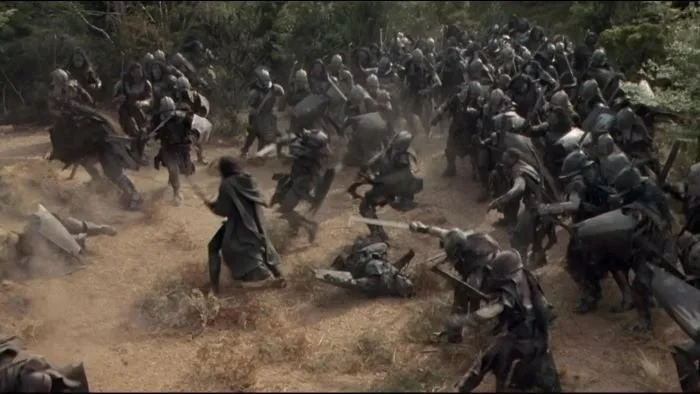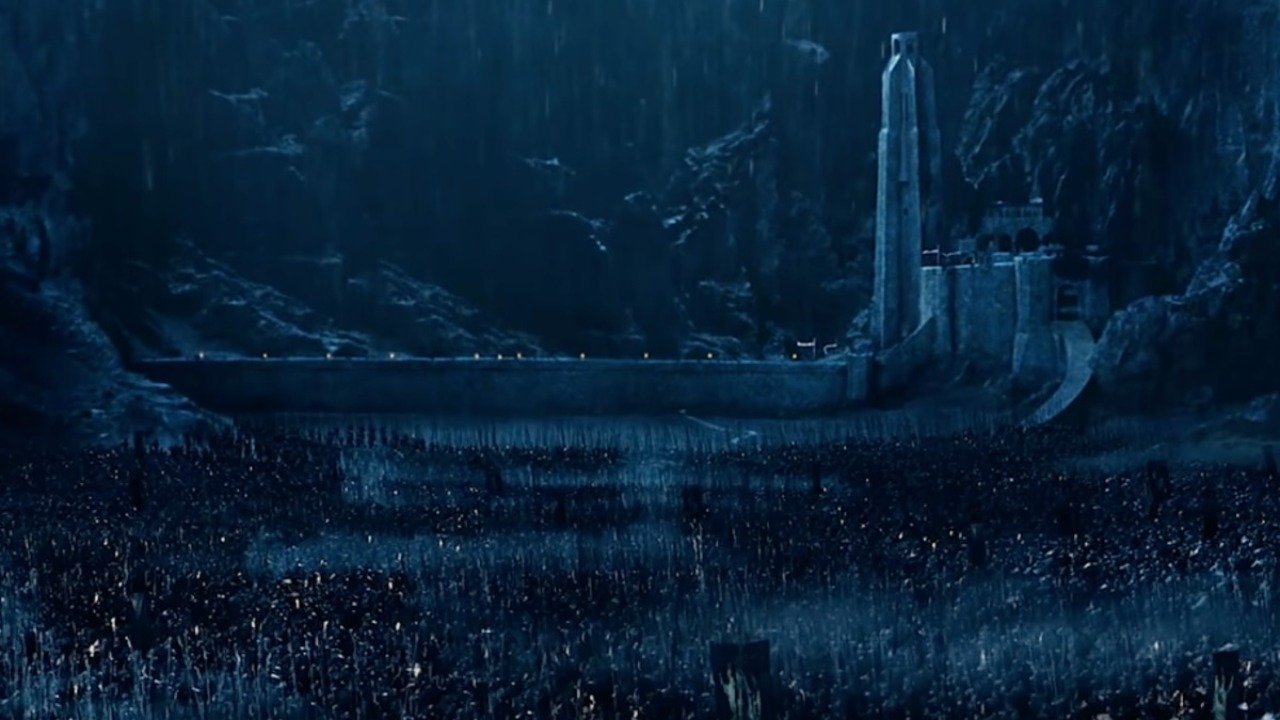Why The Orcs In 'The Lord Of The Rings' Are So Easy To Kill
Image Source: BoingBoing
Orcs were the most prominent threat in all of Tolkien's legendarium. Sure, Dire wolves (Wargs), Ringwraiths, Balrogs, etc. all existed in Tolkien's works, but by far it was the green-skinned brutes that appear most often as the threats to our heroes. They were the cannon fodder of Middle-earth, the equivalent of the stormtroopers in Star Wars or the Chitahuri in The Avengers. They clumsily attacked our heroes in vast numbers, only to be cut down like a knife through butter. They made the good guys look spectacular, and in some cases, even let them make a game out of how many they have killed. Unlike in the case of stormtroopers and the Chitauri, who were actually supposed to be proficient soldiers and should not die as easily as they do, Tolkien had given an explanation as to why the Orcs were so easy to defeat.
There were a few factors to consider here. The main characters who fought the Orcs were members of the Fellowship in The Lord of the Rings, and the Dwarves in The Hobbit films. These characters were all noble-born and in some cases descendants of kings and lords. It is safe to say these people probably had extensive combat training and carry the best weaponry and armor, more than the average soldier would get at any rate. Aragorn was an 80-year-old ranger who was the heir to the throne of Gondor. It is easy to understand why someone of his pedigree and experience could easily cut through lots of average soldiers. We can expect him to have the best training, the best armor, and the sharpest swords, all of which would give him a great tactical advantage.
RELATED:
However, in The Fellowship of the Ring, during the climactic fight at Amon Hen, Merry and Pippin took out multiple Uruk-hai by throwing stones at them. The Uruk-hai were supposed to be the strongest of all types of Orcs. Yet they were bested by two halflings with zero training, using stuff they picked up off the ground. The fact that the strongest Orcs could be defeated so easily with so little force suggests there was more than just training and equipment which made the Orcs so easy to dispose of. This could just be due to an old movie trope of having a large number of easily defeated enemies that the heroes can kill. After all, a lone Orc killing off Aragorn or Legolas midbattle would not make a very good film. Fortunately, Tolkien gave us a deeper explanation.
Image Source: One Wiki to Rule Them All
In Unfinished Tales, Tolkien wrote about a battle between men and Orcs titled “The Disaster of the Gladden Fields.” He said of the Orcs:
"The arrows had been unavailing against the Númenórean armor. The great Men towered above the tallest Orcs, and their swords and spears far outreached the weapons of their enemies."
Tolkien stated that Men were taller than Orcs, inferring they were stronger, and suggesting that the weaponry of the Men was vastly superior to that of the Orcs. Here we can see a reason within the lore for the Orc’s weaknesses, but Tolkien went further and told us why their weaponry was worse. While writing about the battle of the Fords of Isen, which happens during The Lord of the Rings, Tolkien stressed how inferior the Orcs’ equipment is compared to that of the Men:
"The Rohirrim had the advantage in being supplied by the metal-workers of Gondor. In Isengard as yet only the heavy and clumsy mail of the Orcs was made.”
Orcs were Sauron’s primary workforce as well as the backbone of his armies. They were used for everything from construction to messengers. It is hard to imagine they got any adequate training with all their responsibilities. The Dark Lord also focused on numbers rather than skill. He would rather have a thousand untrained Orcs than one heavily-armored, well-trained one.
The Orcs never really stood a chance against the heroes of Middle-earth. Sauron’s overreliance on them made the Orcs pretty useless at everything. Their lack of skill and decent armor and weaponry meant they could never seriously challenge the likes of Aragon, Legolas, Gimli, or Thorin Oakenshield. They were only ever threatening in large numbers, and even then, they were easily dispatched.
READ NEXT:
Source(s): CBR




